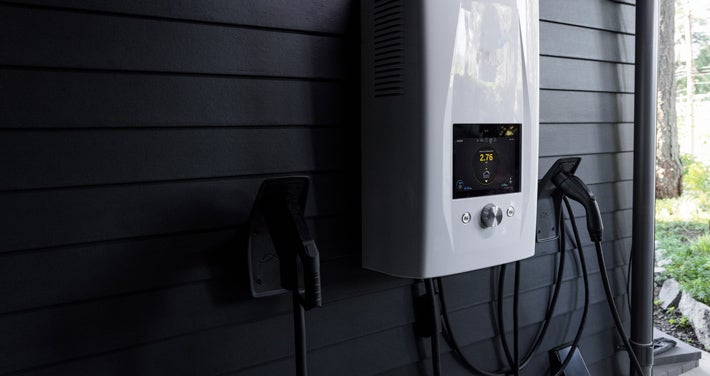While it’s true that electric vehicles (EVs) typically have a higher up-front cost than comparable vehicles with combustion engines, it’s not always possible to compare apples to apples. In some cases, EVs are built with features that aren’t available in their gas-powered counterparts, and some of their benefits can be difficult to put a price tag on.
Federal tax credits and other incentives, however, aim to reduce the ownership costs of EVs, factoring in things like depreciation, resale value, energy consumption, and maintenance costs. In 2010, the federal government implemented a program designed to lower the cost of EVs to be more in line with that of gas-powered vehicles with the goal of incentivizing drivers to consider more fuel-efficient options. In 2022, this program underwent significant changes.
Credits for Vehicles Purchased in 2023 or After
The federal tax credit was overhauled as part of the Inflation Reduction Act of 2022. The previous law had a “sunset clause” that phased out the incentive for manufacturers that had reached 200,000 in vehicle sales. For example, Tesla reached that limit in July of 2018, with General Motors following suit in December of that year. The Inflation Reduction Act of 2022 abolished this cap for automakers.
While the maximum tax credit on the purchase of a new EV remains at $7,500, there were several other changes to the program, now known as the Clean Vehicle Credit:
- The final assembly of qualifying EVs must take place in North America.
- The vehicle must have a battery capacity of at least seven kilowatt hours.
- The purchase price is capped at $55,000 and $80,000 for new cars and new trucks/SUVs, respectively.
- Household income is also an eligibility factor, capped at $150,000 for single taxpayers or those who file separately, $225,000 for heads of household, and $300,000 for joint filers.
- The credit amount will depend on the vehicle meeting the critical minerals sourcing and/or battery components sourcing requirements.
Used EVs are now eligible for a reduced tax credit of 30% of the vehicle's sale price up to $4,000 via the Used Clean Vehicle Credit, with several caveats:
- The vehicle must be purchased from a dealer and the price cannot exceed $25,000.
- The vehicle must be at least two years old.
- The credit may be claimed only once during the vehicle’s useful life.
- Household income is capped at 50% of that for new car buyers ($75,000 for single taxpayers, for example).
Starting January 1, 2024, buyers can choose to transfer their new or used clean vehicle credit to a registered dealer in exchange for an equivalent reduction in the purchase price of the vehicle. The dealer must submit the appropriate report to the IRS at the time of purchase.
How to Determine the Eligibility of an EV Purchase
The US Department of Energy provides a tool at fueleconomy.gov which allows consumers to see eligible vehicles. In instances where automakers build the same vehicle at multiple factory locations, consumers are urged to check the vehicle identification number (VIN) of the specific vehicle prior to purchase via the Alternative Fuels Data Center website.
Credits for Vehicles Purchased Before 2023
The legacy tax credit is still available for vehicles purchased before August 17, 2022 and placed into service before January 1, 2023, or for vehicles purchased and placed into service on or after August 17, 2022 and before January 1, 2023. Visit fueleconomy.gov to learn more.
Refueling Infrastructure Tax Credit
Residents living in certain census areas who install qualified EV charging equipment for their principal residence may receive a tax credit for the lesser of 30% or $1,000. Businesses and other organizations may also be eligible for a credit. Visit the IRS Alternative Fuel Vehicle Refueling Property Credit page to learn more.
State Incentives
Massachusetts offers rebates through their MOR-EV program, for which individual and fleet purchases are eligible for rebates of up to $3,500 for new or used cars and up to $7,500 for pick-up and light-duty trucks. New Hampshire does not have a comparable incentive program at this time.
Key Takeaways
- The federal tax credit for the purchase of a new EV remains up to $7,500, but the eligibility of both purchasers and the vehicles themselves have changed dramatically.
- The Inflation Reduction Act aims to incentivize consumers to purchase EVs that are manufactured or assembled in the United States.
- These programs are subject to change; consumers are urged to consult with a tax professional to determine their eligibility before making a purchase.




